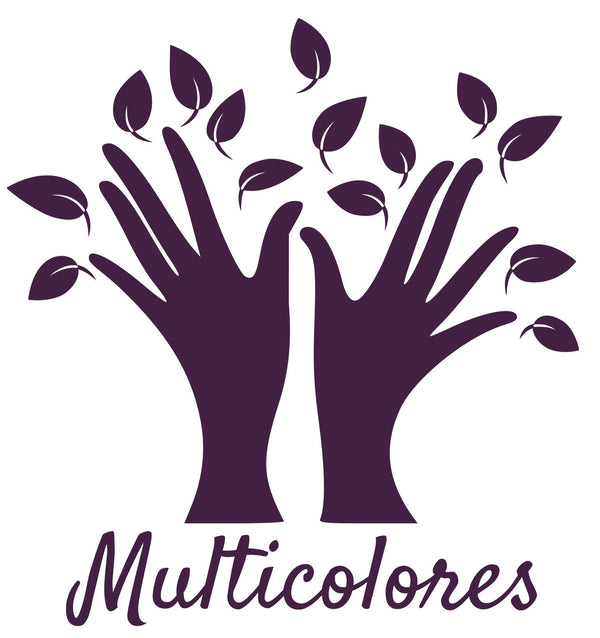Inspired, one-of-a-kind designs
-
Multicolores’ artists have mastered the art of rug-hooking: stitching strips of fabric into thousands of loops of color that become vibrant works of art, like painting with textiles.
-
“The rugs signify our culture, but also our efforts, how we have been able to get ahead. The rugs are part of us, part of our struggle to be valued, respected and recognized.”
-Ramona Tzunún, rug-hooking artist
-

The natural world and its lively flowers, leaves, animals, and birds
-

Motifs found in handwovenindumentaria maya Mayan traditional dress). These woven motifs convey rich meaning and community identity
-

Mayan heritage and cosmovision, including nahuales: powerful symbols that express each individual’s place in a balanced spiritual ecosystem
-

Personal and family stories, legends, folktales, and the artist’s vivid imagination
-
Artists begin with cotton base cloth, which is woven in a small workshop in Guatemala and cut to size. Each artist maintains a library of homemade cardboard templates that she uses to trace the shape of favorite designs. Some artists prefer to work entirely freehand.
Over time, each artist has developed her distinctive individual style, favorite color combinations, and signature motifs.
-
“We use a combination of templates and freehand drawing in our design process. Templates are useful because they save time and allow us to play with the composition. I sometimes borrow templates from other artists to keep my designs fresh.”
- Glendy Muj, rug-hooking artist
Artist Nicolasa Barán demonstrate the rug-hooking technique:
-
Hooked artwork is made from strips of fabric cut from recycled secondhand clothing, known aspacabecause of the way clothing is shipped, in bales. Artists purchasepacaat small shops and markets in their communities, then wash each garment before cutting it into strips. The artists are experts at selecting fabrics and color combinations, using primarily cotton jersey garments like t-shirts.
-
A single rug contains fabric from 30-50 recycled garments
A lasting legacy
The rug-hooking program began years before Multicolores was registered as a nonprofit association, and in many ways it is the foundation of Multicolores. Many of the key values and strategies that shape Multicolores today evolved from lessons learned in the early years of the rug-hooking program:
- Artist-led, participatory processes: rug-hooking artists were instrumental in defining quality and design standards that established Multicolores’ tradition of excellence
- Education opportunities for all: Multicolores’ approach of designing workshops that are accessible to all women, regardless of their literacy level, education, or artisan experience, began with the first cohort of artists and continues today
- Artists, not simply craftswomen: rug-hooking artists preferred designing their own, unique creations rather than mass-producing a set of standardized designs. Being the designers of their own work brought them more satisfaction and personal fulfillment than simply earning an income as a talented craftswoman
- Teach the teachers: The first rug-hooking artists were eager to share their new skills–and opportunities– with other women in their communities. From this desire to share the wealth came Multicolores’ enduring model: we invite artists to participate in workshops, and then they are responsible for sharing their learning with their group.





